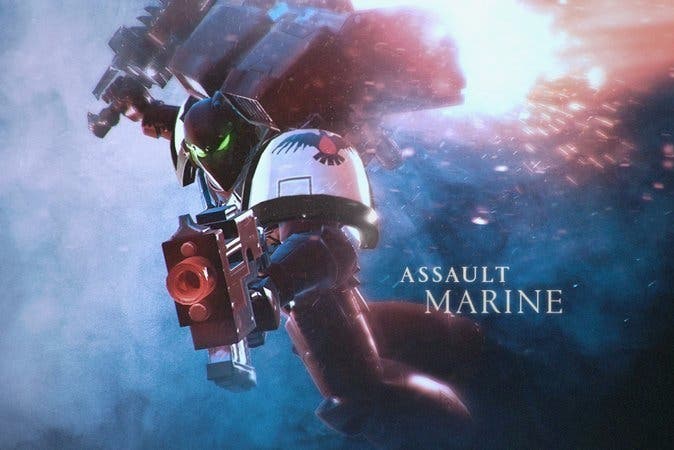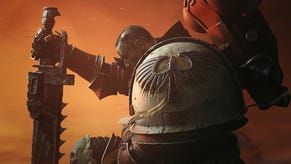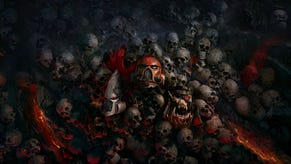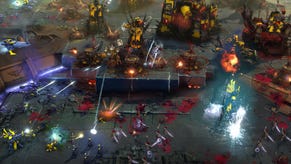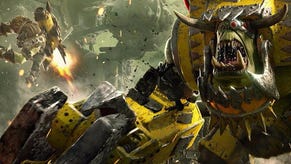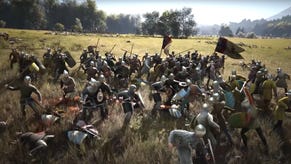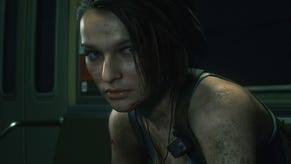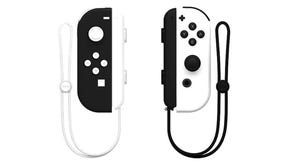A close look at Warhammer 40,000: Dawn of War 3's new cover system
It's different, but is it better?
I've played Relic's upcoming real-time strategy Warhammer 40,000: Dawn of War 3 for a few hours, and have reported on its new mechanics and systems for our recent preview. But one new mechanic in particular is worth going into more detail on: cover.
Cover is hugely important in Relic's RTS games. Squads in cover fight for much longer than they would otherwise. Smart positioning of your units can help turn the tide of battle.
The first Dawn of War, which came out in 2004, used a terrain-based cover system. If a unit stood on terrain considered cover, a tiny symbol would show up above it to let you know. Cover was applied on a unit by unit basis, which meant some units in a squad could be in cover when the others weren't.
To work out the cover benefit of a terrain, all you had to do was move the mouse cursor over it and the relevant symbol would show up. This worked the same for terrain that provided negative cover - that is, terrain that would turn your soldiers into sitting ducks triggered a symbol of its own.
So, with the first Dawn of War, you'd be jostling for position with your opponent, trying to ensure your units were in cover as the enemy's were not. I liked it!
For Dawn of War 2, which ditched the base-building and large armies of its predecessor in favour of more hero-focused gameplay, Relic used a different cover system similar to that in its other RTS: Company of Heroes.
Here, cover was provided by objects in the environment, such as sandbags and walls and other bits and bobs. To place a squad into cover, you had to select it, then move the mouse cursor over the cover. This would display a series of blobs, each representing a unit in the squad, that indicate where the units would snap to the cover. The blobs were coloured differently depending on the level of cover provided. Then, a single click of the mouse button would send your soldiers literally running for cover.
Dawn of War 2 also encouraged players to use buildings as cover. By moving a squad into a building, they would benefit from a huge defensive bonus. And from the relative safety of a building, a decent ranged damage squad could decimate an unsuspecting opponent. I'd spend a lot of my time, as the Space Marines, positioning Avitus' Devastator squad in cover, then directing heavy weapon fire from range. This system worked well for Dawn of War 2's gameplay, which revolved around frontline combat and unit-based tactics.
Moving onto Dawn of War 3, Relic has once again come up with a new cover system. Dawn of War 3 is a sort of fusion of Dawn of War 1 and Dawn of War 2. Base building and big armies are back, but there's still a focus on hero units.
Dawn of War 3's cover system works similarly to Dawn of War 2's buildings I mentioned earlier. Cover is a fixed area on the map that you send units into to capture and then occupy. There's a capture time associated with cover now, although it's pretty quick.
Once you've captured cover, it's yours, and it protects units inside from all incoming ranged damage. Effectively, cover becomes a safe zone.
Now, there are counters to this. The "health" of the cover can be eroded by standard damage, so you can have ranged troops shoot it until it blows up. But this is an efficient tactic. Much more efficient is to send melee units into the cover to carve up whoever's inside.
Dawn of War 3 has a raft of melee specialist unit types. The Assault Marines, for example, use jump packs to leap into the air then smash into the ground, knocking back enemies in the process. Because they can quickly jump over long distances, they can force enemy ranged units out of heavy cover while the rest of your army moves in to pick off their scattered forces.
I found the Space Marine hero unit Gabriel Angelos was also great for taking cover; his jump and hammer slam attack perfect for disrupting cowering enemy infantry. The Assault Terminator squad, another hero unit, can teleport straight inside.
During a recent visit to Relic's office in Vancouver, Canada, I had a chat with game designer Philippe Boulle about Dawn of War 3's cover. He said that the new system was in part about giving melee specialists "a really crisp role" on the battlefield.
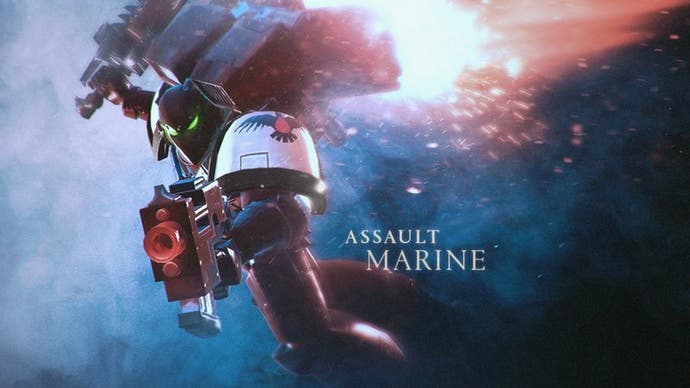
But there's more to it than that. Pretty much everything the developer is doing with Dawn of War 3 revolves around a design mantra the team brings up time and time again: clarity.
Clarity is one of the reasons for Dawn of War 3's divisive new art style, and clarity is one of the reasons for Dawn of War 3's new cover system.
"The Dawn of War 2 and Company of Heroes cover system can be a little muddy, in that it's highly directional," Boulle explained.
"So, that gives great opportunities to flank, but there's not a lot of messaging around being flanked. It works fine when you're a little closer and not dealing with large armies. We're dealing with large armies. Taking five squads of Space Marines and lining them up behind walls and bushes is pretty tedious. Whereas, having a fixed thing where I can just right click and they'll all go in there, that worked better for us.
"And then we really liked the role that created for those melee units. It really gave melee a really strong reason to be."
There is some secondary reasoning for the cover switch, too. Boulle added that the cover system used Company of Heroes makes sense for a World War 2 game, but in Dawn of War 2 it "strains credibility", a realisation that contributed to Relic's decision to think again.
"I'm in WW2, okay I get a little stone wall will block bullets from a rifle but won't from an anti-tank gun, or whatever," he said.
"But superheated plasma versus lasers versus mass-reactive self-propelled explosive bolts? I can't tell you which one of those will do better against a masonry wall, right? So there becomes a bit of a suspension of disbelief issue."
Then there's map design's influence on cover. The directional cover system of Dawn of War 2, which required loads of objects placed in the environment that could be used as cover, meant maps were quite crowded.
"It makes it much harder to have open, sweeping maps," Boulle said. "And then when you have big armies and floating tanks and stuff, you want that open sweeping map. So, ultimately it was a choice of what style of gameplay did we want."
Since Dawn of War 3 was announced, the series' most ardent fans have debated the rights and wrongs of everything from its new art style to the way you upgrade units on the battlefield. The new cover system hasn't exactly caused a furious row, but there's a healthy debate.
And I can tell Relic agonised over the decision to ditch Dawn of War 2's cover system, too.
"You know, I see that the potential of the directional cover system was always very high," Boulle admitted, "and there was so much great gameplay that came out of it, that, yeah, it's obviously something where, why would you take that out?
"It's a great debate to see. These are people who really care about this game. That's really gratifying."
The proof of the pudding is in the eating, of course. I found Dawn of War 3's new, simplified cover system easy to grasp, and it was immensely satisfying to capture cover points in the right way - that is, by sending Assault Marines leaping into them for maximum splash damage.
But I do miss the spectacle of the environmental destruction of Dawn of War 2. Ripping apart cover with heavy bolter fire was one of that game's most delicious pleasures, and it's a shame Dawn of War 3 doesn't repeat the trick.
Let's be honest, though. Dawn of War 3's Orcs will no doubt make this new cover system sing. I can't wait to send an army of Stormboyz descending upon a squad of Space Marines holed up in their "safe zone".
